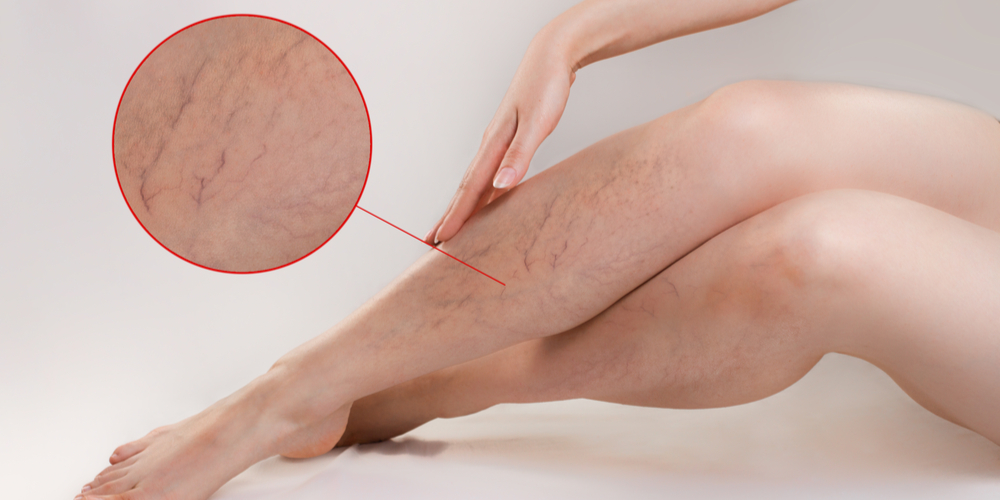
Vein Pain Experts Austin Texas
Austin Vein Specialists is a medical clinic that focuses on the management of diseases of the veins. Vein pain is a common presentation of venous disease, with leg pain being the most common location for vein pain. Our vein pain experts provide vein treatment services at clinic locations in both Austin and Round Rock Texas. We provide diagnostic services, such as vein ultrasounds, to determine the underlying cause of the vein pain. Our vein centers also have all the necessary equipment to treat conditions that are leading to vein pain. Relief of symptoms usually occurs very quickly following vein therapy.
Common Causes of Vein Pain
There are many common vein-related conditions or diseases that cause vein pain to occur. Some of these conditions are very serious and can even be lethal. A thorough and accurate assessment by a board-certified vein pain expert is essential in order to achieve an accurate diagnosis in a timely fashion in order to prevent the conditions from worsening and causing significant health issues. Some of the more common conditions that result in vein pain are listed below.

Blood Clots
The most serious cause of vein pain is blood clots. Healthy veins always have active blood flow moving through them. But if thickening of the blood or slowdown of blood flow occurs, then a clot can form inside the vein lumen, obstructing venous blood flow. This obstruction leads to pain as a result of elevated venous pressure as a result of the obstruction, as well as resulting from the vein wall inflammation that follows. There are 3 factors that predispose to the development of blood clots: known as Virchow’s triad. These are 1) stasis of blood flow, or slowing of the blood movement within the vein. One common example is lack of movement during travel. 2) Hypercoagulability, or thickening of the blood, can also contribute to blood clot formation. Certain diseases, including inherited conditions such as Factor V Leiden mutation, Prothrombin gene mutation, elevated homocysteine levels, genetic resistance to the anticoagulant action of activated protein C (APC), and the presence of antiphospholipid antibody syndrome are among common causes of hypercoagulability. Active cancer is another reason that the body can become hypercoagulable. 3) Another cause of blood clot development is an injury to the blood vessel lining of the vein (i.e. the endothelium) is. This can occur with trauma or surgery.
Varicose Veins
Varicose veins are the most common reason for vein pain. Varicose veins are usually an inherited condition and can present at any time in life after the teenage years. Varicose veins are defined as enlarged veins that exhibit aberrant flow as the result of diseased vein valves. They are usually leg veins that appear as bulgy, blue, and tortuous veins under the surface of the skin. Focal pain can often develop at the sites where the veins are bulging. The pain occurs as a result of the pressure buildup inside the veins and the adjacent tissues.
Phlebitis and Vein Pain
Phlebitis is an abnormal inflammation of a vein wall. Phlebitis can occur in any vein of the body, although the legs are the most common location. Phlebitis is often the result of a blood clot forming inside the vein. When the clot is close to the surface it is referred to as superficial thrombophlebitis (i.e. SVT). When the clot is deeper it is referred to as deep thrombophlebitis or DVT. Phlebitis is almost always associated with vein pain at the site of phlebitis. When the phlebitis is located close to the skin surface the skin is usually red, inflamed, and tender. The underlying inflamed vein is often firm and feels like a knot under the skin. Phlebitis can be often be diagnosed by a physician on a physical exam. An ultrasound may be required to confirm the diagnosis. Phlebitis can be serious and even sometimes lethal, so immediate consultation with a physician is recommended.
Venous Reflux or Venous Insufficiency
Venous reflux disease is a common cause of leg pain, leg swelling, and the development of varicose veins. Some patients can develop dermatitis or skin browning around their ankles. Venous reflux results from weak valves inside of leg veins which causes abnormal blood flow to occur in the legs. Venous reflux disease leads to pain in the majority of patients that have this condition. Circulation pain in the faulty veins often occurs. Compression stockings and leg elevation can be useful to relieve symptoms from this condition. There are often interventional treatments that may resolve the condition and resolve the symptoms. Seek a board-certified vascular physician to be assessed for this condition. An ultrasound will be needed to confirm the diagnosis.
May Thurner Syndrome
May Thurner Syndrome is a congenital abnormality of venous anatomy in the pelvis that can lead to leg pain, leg swelling, and blood clots. It usually affects the left leg and left pelvic iliac vein. A narrowing or stricture of the iliac vein causes the symptoms. May Thurner Syndrome can be successfully treated with a vein stent in the left iliac vein.
Venous Scar Tissue
Scar tissue located within a vein can lead to chronic pain in the body, most commonly the legs. The venous scar is most commonly the result of blood clot damage or phlebitis. It can also result from trauma or surgical damage. The venous scar can often be diagnosed with imaging, including ultrasound and CT scan.
Venous Ulcers
Venous ulcers are one of the most painful vein conditions. Venous ulcers usually develop in the ankle or foot, most commonly the inner or medial ankle. They are the result of venous circulatory diseases. Blood clot damage, post-thrombotic syndrome, and chronic venous reflux disease / venous insufficiency are the most common causes of venous ulcers. If the circulation condition is treated, venous ulcers usually will heal.
Reticular Veins / Spider Veins
Although reticular and spider veins are the most minor type of venous disease, they can often result in leg, foot, or ankle pain. The pain is often hormonally responsive, being worse during menstrual cycles and pregnancies. Prolonged standing and sitting can also make these types of veins ache or burn.
Hormone Fluctuation and Vein Pain
Hormonal therapy, such as birth control pills or post-menopause hormone replacement can cause the abnormal veins in the body to ache or become uncomfortable. Women often report increase vein pain during certain phases of their menstrual cycles.
Pregnancy and Vein Pain
Vein pain often develops or worsens during pregnancy. Certain venous diseases can develop during pregnancies, such as varicose veins, spider veins, phlebitis, blood clots, or venous valve reflux. As a result, women often first develop vein pain during their pregnancies or have significant worsening of their vein pain while they are pregnant. The venous disease often worsens during the last phases of pregnancy, with maximal symptoms during the third trimester of pregnancy.


